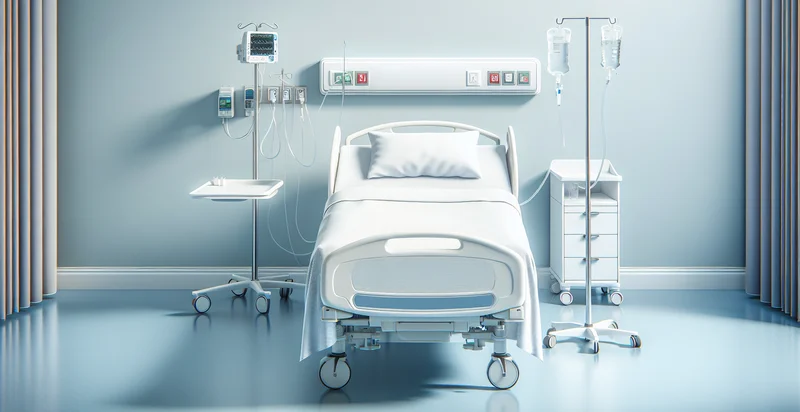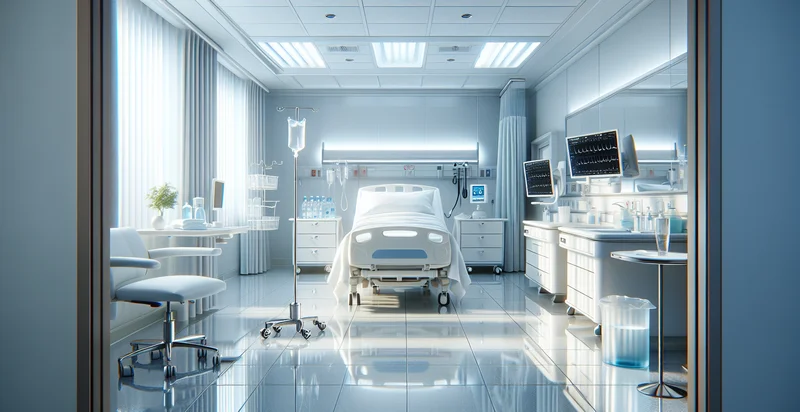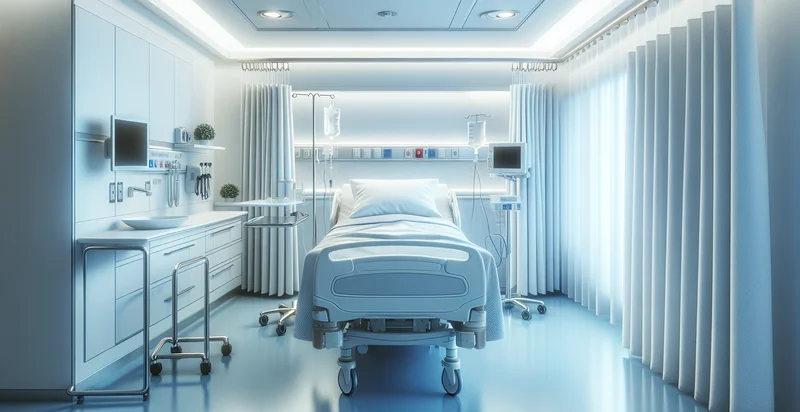Identify if hospital bed is clean
using AI
Below is a free classifier to identify if hospital bed is clean. Just upload your image, and our AI will predict if the hospital bed is clean - in just seconds.

Contact us for API access
Or, use Nyckel to build highly-accurate custom classifiers in just minutes. No PhD required.
Get started
import nyckel
credentials = nyckel.Credentials("YOUR_CLIENT_ID", "YOUR_CLIENT_SECRET")
nyckel.invoke("if-hospital-bed-is-clean", "your_image_url", credentials)
fetch('https://www.nyckel.com/v1/functions/if-hospital-bed-is-clean/invoke', {
method: 'POST',
headers: {
'Authorization': 'Bearer ' + 'YOUR_BEARER_TOKEN',
'Content-Type': 'application/json',
},
body: JSON.stringify(
{"data": "your_image_url"}
)
})
.then(response => response.json())
.then(data => console.log(data));
curl -X POST \
-H "Content-Type: application/json" \
-H "Authorization: Bearer YOUR_BEARER_TOKEN" \
-d '{"data": "your_image_url"}' \
https://www.nyckel.com/v1/functions/if-hospital-bed-is-clean/invoke
How this classifier works
To start, upload your image. Our AI tool will then predict if the hospital bed is clean.
This pretrained image model uses a Nyckel-created dataset and has 2 labels, including Clean Bed and Dirty Bed.
We'll also show a confidence score (the higher the number, the more confident the AI model is around if the hospital bed is clean).
Whether you're just curious or building if hospital bed is clean detection into your application, we hope our classifier proves helpful.
Related Classifiers
Need to identify if hospital bed is clean at scale?
Get API or Zapier access to this classifier for free. It's perfect for:
- Bed Routine Monitoring: This use case focuses on ensuring that hospital beds are consistently cleaned between patient use. By utilizing the image classification function, nursing staff can quickly verify the cleanliness of beds after they have been sanitized, ensuring optimal hygiene practices.
- Quality Assurance Audits: Hospitals can implement the identification function as part of their audit procedures for cleanliness standards. Regular monitoring can help quantify compliance with cleaning protocols, providing valuable data for quality assurance departments to analyze and improve hospital sanitation practices.
- Infection Control Compliance: Preventing hospital-acquired infections is critical for patient safety. By integrating the bed cleanliness identifier into infection control workflows, hospitals can proactively identify and rectify cleaning lapses, ultimately leading to reduced infection rates.
- Staff Training Enhancement: The image classification function can be employed in training programs for housekeeping staff. By identifying whether beds are clean in training scenarios, staff can receive immediate feedback, helping them to improve their cleaning techniques and understanding of hospital protocols.
- Resource Allocation Optimization: Hospitals can utilize the identification of clean beds to optimize the allocation of healthcare resources and staff. By assessing which beds are ready for new patients based on cleanliness, management can better coordinate admissions and reduce patient wait times.
- Patient Safety Reporting: This functionality can be integrated into patient safety reporting systems to flag inconsistencies in bed cleanliness. By automatically alerting staff regarding unclean beds, the system can help mitigate risks to patients and enhance overall safety in the hospital environment.
- Maintenance Scheduling: The identifier can assist in scheduling regular maintenance for cleaning equipment and processes. By analyzing data on bed cleanliness over time, hospital administrators can determine optimal cleaning frequencies and resources needed for bed sanitation, leading to more effective operational planning.


